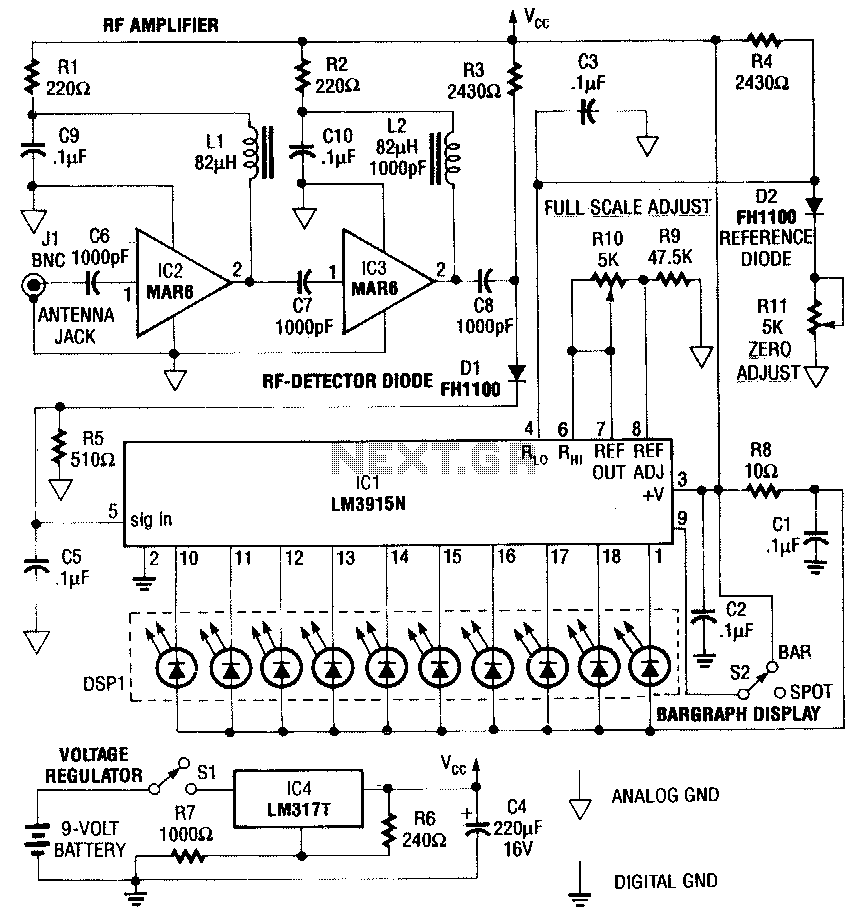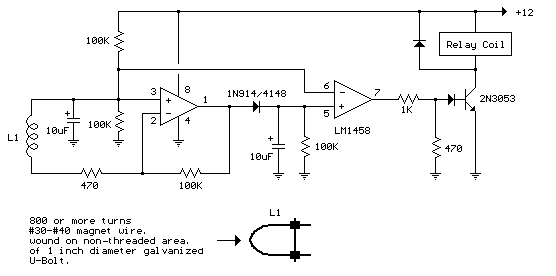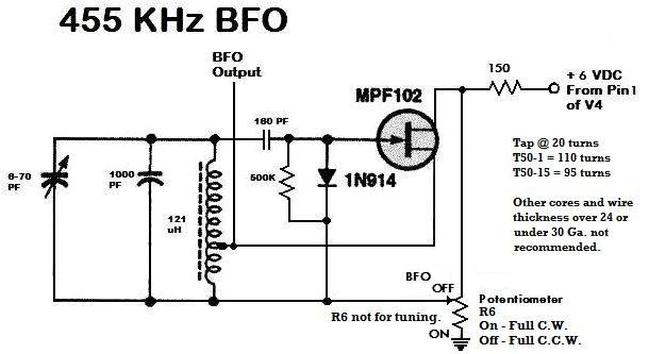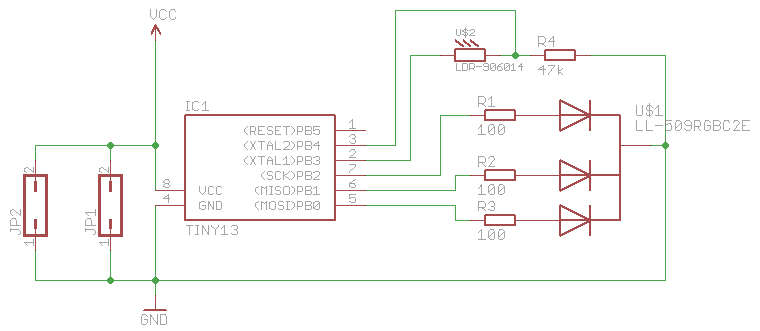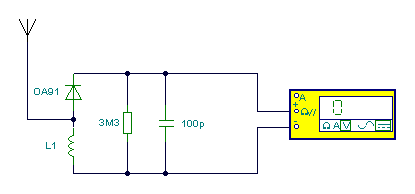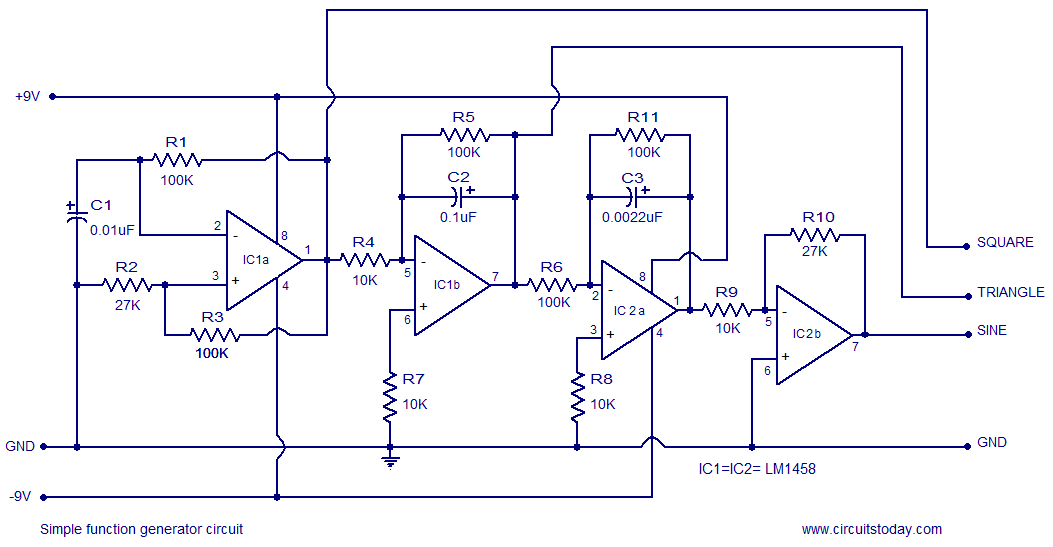
Simple Lie Detector

Here is a straightforward lie detector that can be assembled in a matter of minutes and can be very useful for determining if someone is telling the truth. While it is not as advanced as professional models, it is functional. The device operates by measuring skin resistance, which decreases when an individual is lying. To utilize the circuit, attach the electrodes to the back of the subject's hand, approximately 1 inch apart. Next, calibrate the meter for a reading of 0. The meter will indicate that the subject is lying when it shows a change in readings.
The lie detector circuit is fundamentally based on the principle of galvanic skin response (GSR), which is the electrical conductance of the skin that varies with moisture levels and emotional states. The primary components of this circuit include a microcontroller or an analog meter, electrodes for skin contact, and resistors for calibration.
The electrodes, typically made of conductive material, are placed on the skin to measure the resistance. The skin's resistance is influenced by sweat gland activity, which is often heightened during stress or deception. When the subject is calm, the resistance is higher; conversely, when they are lying, the resistance decreases due to increased perspiration.
The circuit can be designed with a simple resistor divider configuration. When the electrodes are connected to the skin, the voltage across the electrodes changes based on the skin resistance. This voltage can be fed into an analog meter for a direct reading or into an analog-to-digital converter (ADC) if a microcontroller is used for more advanced processing. The output can then be displayed on an LCD or LED display for easier interpretation.
For calibration, the circuit should be adjusted initially to read zero when the subject is calm and relaxed. This ensures that any subsequent changes in the reading can be accurately attributed to the subject's responses to questions. It is crucial to ensure that the electrodes maintain good contact with the skin throughout the questioning process to obtain reliable readings.
In summary, while this lie detector circuit may lack the sophistication of professional devices, it provides a basic yet functional means to gauge truthfulness based on physiological responses. The simplicity of its design allows for quick assembly, making it accessible for educational purposes or casual use.Here`s a simple lie detector that can be built in a few minutes, but can be incredibly useful when you want to know if someone is really telling you the truth. It is not as sophisticated as the ones the professionals use, but it works. It works by measuring skin resistance, which goes down when you lie. 2. To use the circuit, attach the electrodes to the back of the subjects hand, about 1 inch apart. Then, adjust the meter for a reading of 0. Ask the questions. You know the subject is lying when the meter changes. 🔗 External reference
The lie detector circuit is fundamentally based on the principle of galvanic skin response (GSR), which is the electrical conductance of the skin that varies with moisture levels and emotional states. The primary components of this circuit include a microcontroller or an analog meter, electrodes for skin contact, and resistors for calibration.
The electrodes, typically made of conductive material, are placed on the skin to measure the resistance. The skin's resistance is influenced by sweat gland activity, which is often heightened during stress or deception. When the subject is calm, the resistance is higher; conversely, when they are lying, the resistance decreases due to increased perspiration.
The circuit can be designed with a simple resistor divider configuration. When the electrodes are connected to the skin, the voltage across the electrodes changes based on the skin resistance. This voltage can be fed into an analog meter for a direct reading or into an analog-to-digital converter (ADC) if a microcontroller is used for more advanced processing. The output can then be displayed on an LCD or LED display for easier interpretation.
For calibration, the circuit should be adjusted initially to read zero when the subject is calm and relaxed. This ensures that any subsequent changes in the reading can be accurately attributed to the subject's responses to questions. It is crucial to ensure that the electrodes maintain good contact with the skin throughout the questioning process to obtain reliable readings.
In summary, while this lie detector circuit may lack the sophistication of professional devices, it provides a basic yet functional means to gauge truthfulness based on physiological responses. The simplicity of its design allows for quick assembly, making it accessible for educational purposes or casual use.Here`s a simple lie detector that can be built in a few minutes, but can be incredibly useful when you want to know if someone is really telling you the truth. It is not as sophisticated as the ones the professionals use, but it works. It works by measuring skin resistance, which goes down when you lie. 2. To use the circuit, attach the electrodes to the back of the subjects hand, about 1 inch apart. Then, adjust the meter for a reading of 0. Ask the questions. You know the subject is lying when the meter changes. 🔗 External reference
